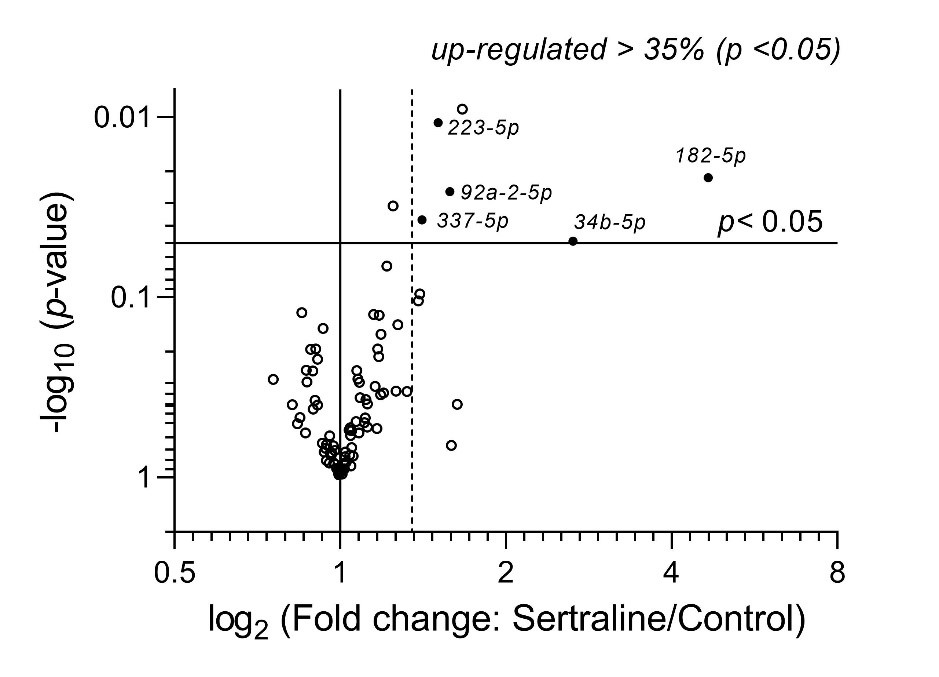Developmental Biology/Cardiac & Pulmonary Development
Developmental Biology/Cardiac & Pulmonary Development 1
187 - The impact of perinatal sertraline exposure on miRNAs, gene expression and cardiac function in a mouse model
Publication Number: 187.403

Sarah Haskell, DO (she/her/hers)
Associate Professor
University of Iowa Roy J. and Lucille A. Carver College of Medicine
Iowa City, Iowa, United States
Presenting Author(s)
Background:
Selective serotonin reuptake inhibitors (SSRIs) are a class of antidepressants currently prescribed to 10% of pregnant women. SSRIs are permeable to placenta and produce direct fetal exposure. Sertraline is one of the most prescribed SSRIs and has selective affinity to serotonin (5-HT) transporter (SLC6A4) which alters 5-HT levels in hormonal and neuronal systems potentially impacting cardiac function. Our previous animal studies showed that sertraline exposure caused smaller left ventricular dimensions and decreased stroke volumes in adult mice, reduced cardiomyocyte number, reduced mouse pup growth from the newborn period to 20 weeks of age and slowed calcium oscillations in cardiomyocytes.
Objective:
Determine the impact of sertraline exposure on the expression of miRNAs which may modulate Slc6a4, and 5-HT receptors (Htr2a & Htr2b).
Design/Methods: C57BL/6 adult female mice received sertraline (5 mg/kg/d IP) or saline 5 days before mating, throughout pregnancy until time of delivery. Pups were daily administrated 10 mL/kg saline or 1.5 mg/kg sertraline from postnatal age 0 to 14 days. Based on the reported databases, we chose 84 miRNAs as putative inhibitors of the relevant genes and contrasted their expression in the hearts of mice with sertraline exposure vs saline at PN14.
Results:
Five miRNAs were observed to have higher up-regulations in sertraline exposure compared to that with saline (n=4, p< 0.05) as shown in Figure (miR-34b-5p & miR-182-5p for Htr2a, miR-223-5p & miR-337-5p for Htr2b, and miR-223-5p & miR-92a-2-5p for Slc6a4). Among them, miR-182-5p was 4.7-fold higher. The corresponding mRNAs of Htr2a, Htr2b and Slc6a4 were significantly decreased as shown in Table (n=8, p< 0.01), implying the inhibiting effects of up-regulated miRNAs. These effects may indicate a potential risk in life when subjected to stress. Concurrently, echocardiograms on adult mice at 10 weeks of age showed sertraline exposure led to decreased heart rate (691 ± 7 control; 649 ± 18 sertraline) and ejection fraction (83.9 ± 0.6 control; 80.6 ± 1.1% sertraline) (female, n=34, p< 0.05).
Conclusion(s):
Perinatal sertraline exposure led to alterations in miRNA with corresponding down-regulation of mRNAs of Htr2a, Htr2b and Slc6a4. Sertraline-exposed mice had decreased heart rates and ejection fraction at 10 weeks of age following perinatal exposure. The consideration of selected miRNAs as modulators of cardiac function related gene expression deserves to be explored as maternal SSRI exposure impacts ~10% of pregnancies. 

